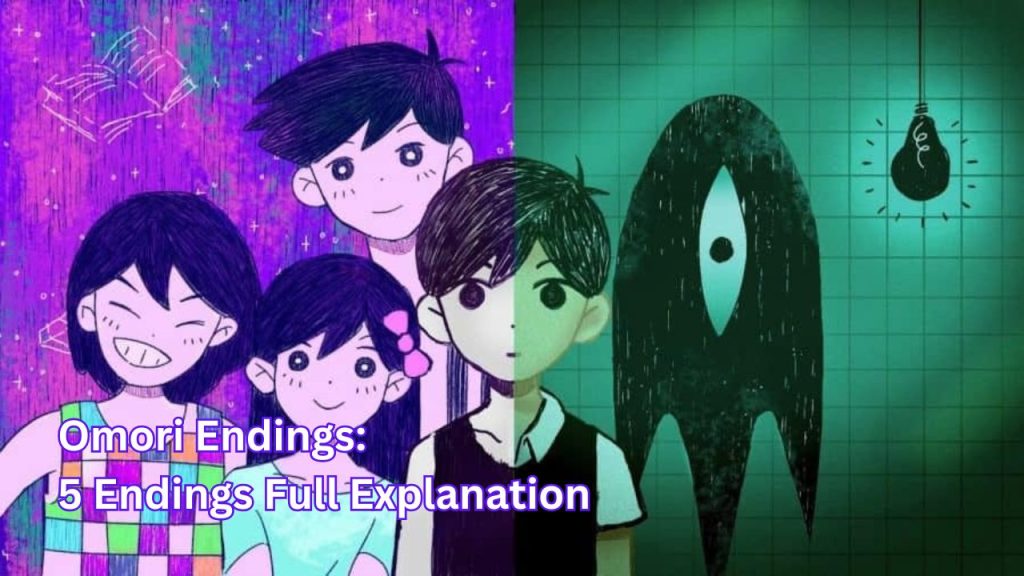Omori Endings: Full Explanation
The Omori endings present diverse outcomes, depending on the choices players make as Sunny during the final confrontation. These endings range from hopeful to tragic and explore themes like trauma, redemption, and friendship. The game features five main endings: the Good Ending, Bad Ending, and three variations of Neutral Endings. Below is an explanation of each and its significance for Sunny and the characters involved.
Quick Answer
The Omori endings vary based on player choices during Sunny’s confrontation with Omori. The outcomes range from a resolution where Sunny seeks redemption to darker paths where tragedy unfolds. Each ending reflects the psychological depth and emotional intensity of the game.
1. The Good Ending
How to Achieve: In the final battle, Sunny must choose to continue fighting against Omori. If he perseveres, he absorbs Omori and wakes up in the real world.
Explanation: In this ending, Sunny decides to face his trauma and reveal the truth about Mari’s death to his friends. This choice symbolizes healing and acceptance. If players consistently water Basil’s flowers, an extra scene shows Sunny and Basil smiling at each other, highlighting their reconciliation and the importance of nurturing friendships(OMORI Wiki)(GamePretty).
2. The Bad Ending
How to Achieve: This ending is triggered if Sunny chooses to give up during the battle with Omori.
Explanation: Here, Omori absorbs Sunny and takes control. In reality, Sunny, overwhelmed by guilt, jumps from the hospital balcony, ending his life. This tragic ending highlights the devastating consequences of unresolved trauma. It serves as a reminder of the importance of confronting and addressing past pain instead of avoiding it(OMORI Wiki)(GamePretty).
3. The Neutral Ending (Suicide)
How to Achieve: If players abandon Basil and then pick up the knife in Sunny’s kitchen, he takes his life.
Explanation: In this outcome, Sunny refuses to confront his trauma and chooses a tragic end. The credits roll as a phone rings, emphasizing the despair and isolation Sunny feels. This variation shows the impact of avoiding emotional responsibility, illustrating the consequences when one fails to face inner demons(OMORI Wiki).
4. The Neutral Ending (Abandon)
How to Achieve: If Sunny chooses not to help Basil but avoids using the knife, he wakes up on Moving Day and leaves without addressing his trauma.
Explanation: Sunny packs up his belongings and leaves town. Sirens in the background suggest Basil’s death, hinting at the consequences of Sunny’s choice. This ending implies that Sunny remains haunted by his trauma, showing how avoiding responsibility can have lasting effects(GamePretty).
5. The Secret Flower Ending
How to Achieve: To unlock this hidden ending, players must water Basil’s flowers regularly. After achieving the Good Ending, an extra cutscene appears.
Explanation: This scene shows Sunny and Basil smiling at each other, symbolizing their path toward healing. It emphasizes the importance of nurturing relationships and taking steps toward forgiveness. This hidden moment rewards players who engage deeply with the game’s mechanics and story, offering a hopeful view of the characters’ futures(OMORI Wiki)(GamePretty).
Final Thoughts on Omori Endings
The endings in Omori provide a powerful look into Sunny’s mind, reflecting the consequences of trauma and the impact of choices. Whether the story ends in healing or tragedy, each path encourages players to reflect on the significance of facing one’s fears and seeking help. The game’s multiple outcomes offer a deeply emotional and thought-provoking experience, showing the power of choice and resilience.


